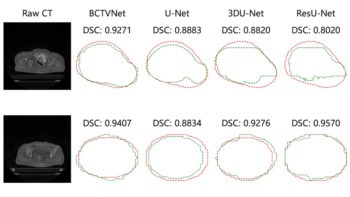An Italian physicist has come up with a way of distinguishing between pop and classical music using theoretical techniques from seismology. Paolo Diodati of Perugia University investigated the difference in the intensity patterns of classical and what he calls "light" music, such as jazz, pop and rock music. He found that the light music could be described by a Gaussian or noise distribution, whereas classical pieces are characterized by more complex statistics.
Diodati says he became intrigued by the link between music and physics after thinking about the crescendo in Rossini’s La calunnia è un venticello, an aria from the Barber of Seville. The words in the aria describe an avalanche building up momentum, which eventually reaches the point where it causes an earthquake. “I was initially curious to verify if the musical crescendo had some mathematical properties that were similar to the physical crescendo of systems evolving towards catastrophe,” he says.
To satisfy his curiosity he turned to computer technology. “It is well known that it is possible to establish a correspondence between sounds and numbers,” Diodati explains in a paper presented to the Italian Congress of Acoustics. “Given a composition we can digitize it no matter how complex it is.”
A number of studies have looked at the frequency distributions within a piece of music by recording how often a given note is repeated. In a Beethoven piece, for example, the probability of each note recurring can be calculated exactly. Diodati, who is a professor of experimental physics and acoustics, extended this statistical principle to study how the intensity of a piece varies. He teamed up with Stefano Piazza, also of Perugia, and used a computer to split the electric signal from a musical recording into segments one-hundredth of a second long. He recorded the number of segments that exceeded a threshold amplitude, calling them “events”, and the distribution in the time between these events.
Diodati was amazed to discover that the intensity variation in Rossini’s crescendo obeyed the same power law as that seen in earthquakes, avalanches or volcanoes. That is to say, the words in the aria matched the music. “We have here a miracle,” exclaims Diodati. “Nature provides a genius with the ability to see, read, extract and reproduce with music, the dynamical synthesis of natural processes.”
Diodati then analysed other pieces of classical music in the same way and found similar intensity distributions. But the results were different when he scrutinized light music – Diodati discovered that jazz and pop music are less predictable. “Classical music seems to be at the border of chaos, while light music appears to be totally chaotic,” he says.
Despite the opinion of some experts that “music is not as tangible or measurable as a liquid or a solid”, Diodati believes that universal, objective features can be drawn from musical pieces. However, he emphasizes that his research can say nothing about personal, subjective taste and about whether lighter music is more or less musical than classical. His paper has now been used by several music teachers in Italy, who have introduced his ideas into their classes, but he presents his results as just a “nice curiosity”, with “no pretension at providing a new perspective in the field of musical analysis”.



